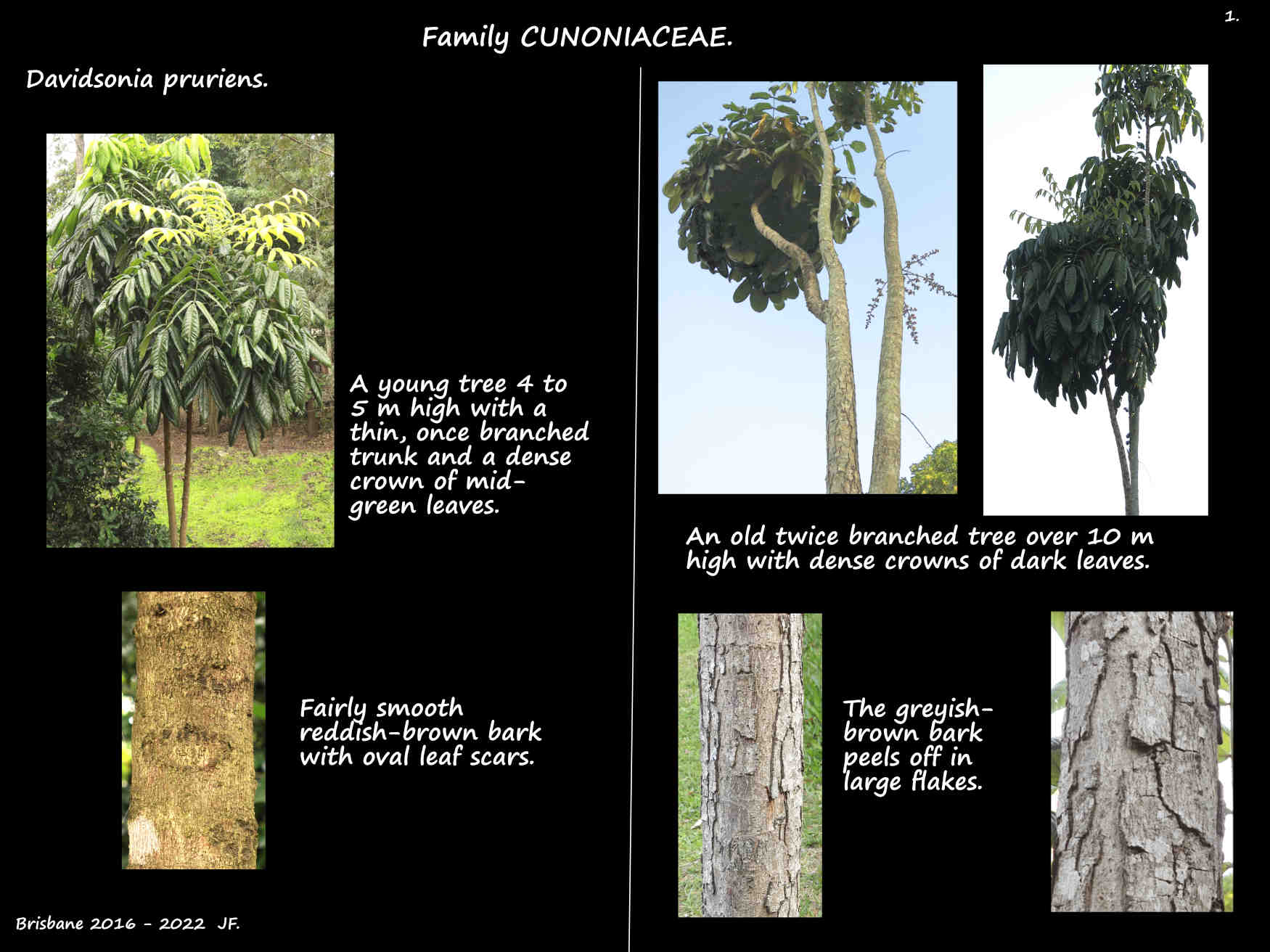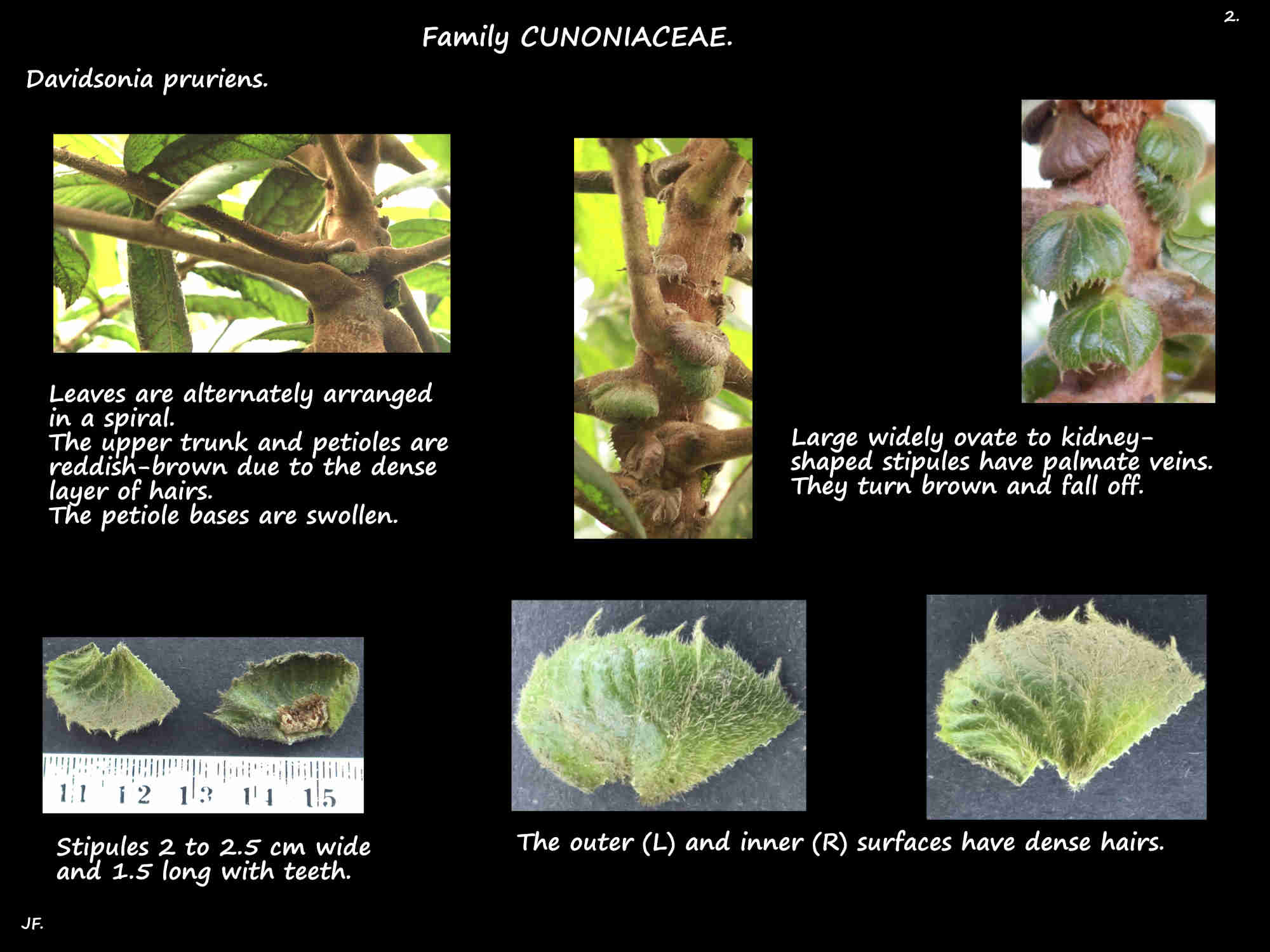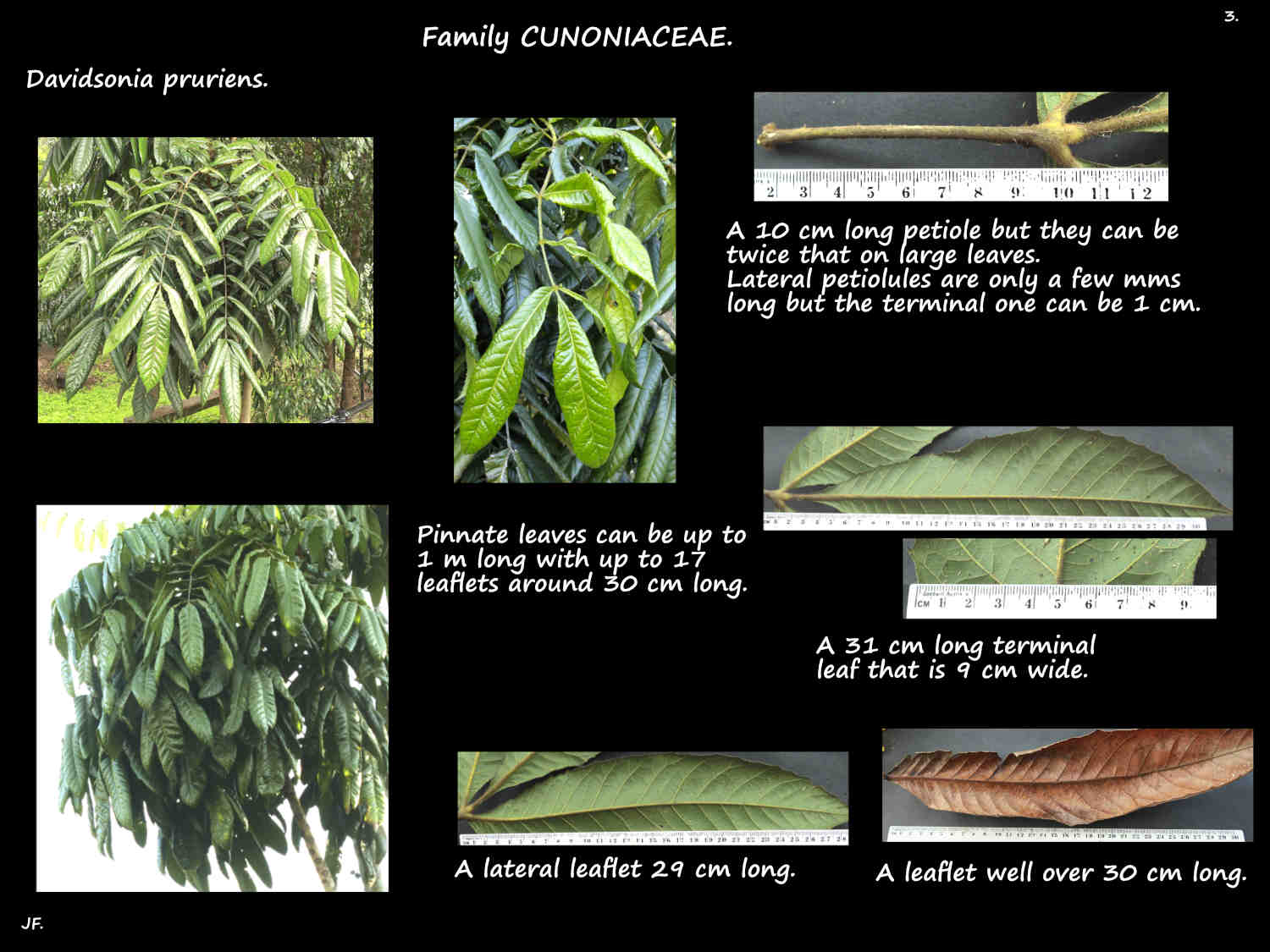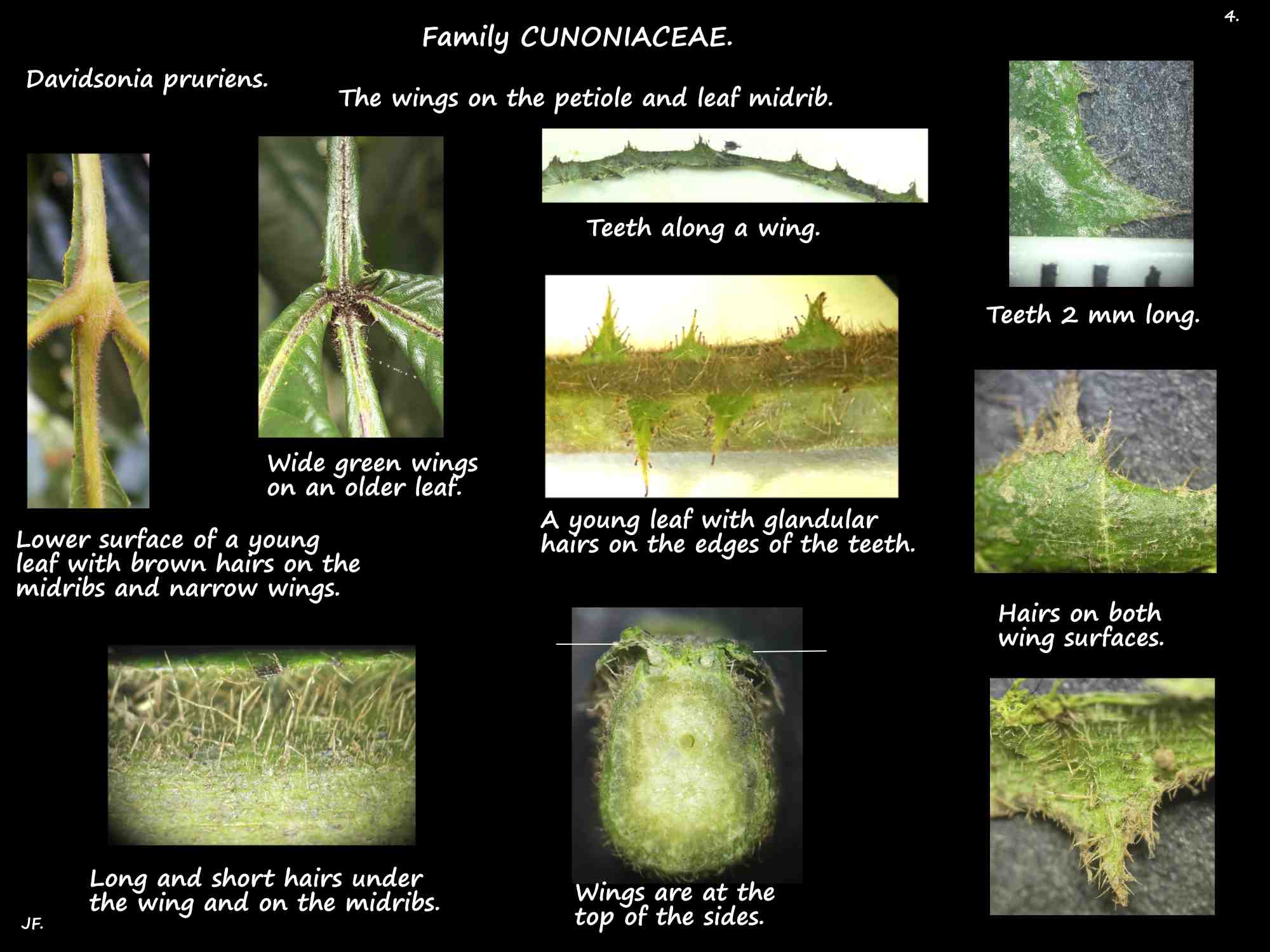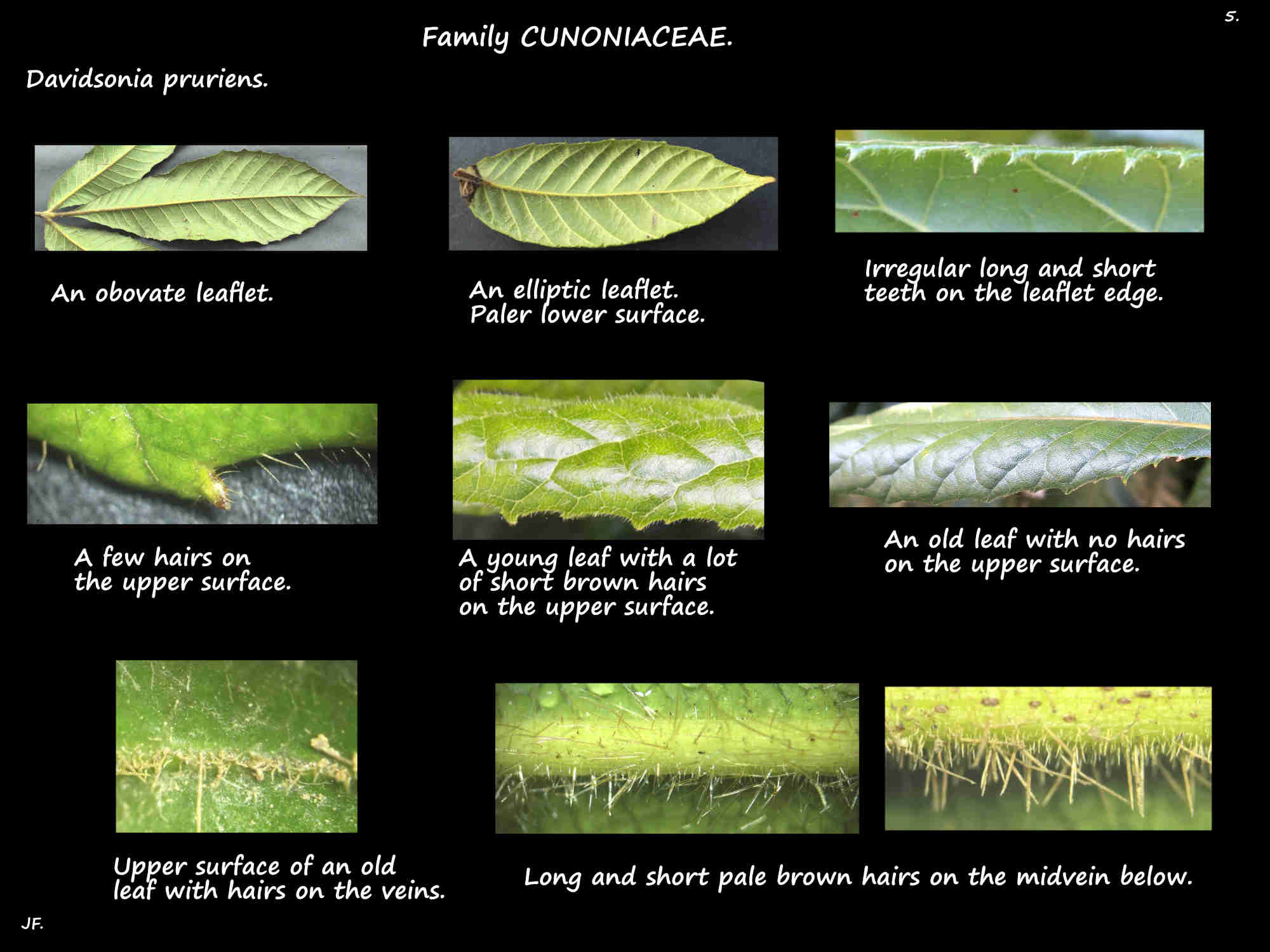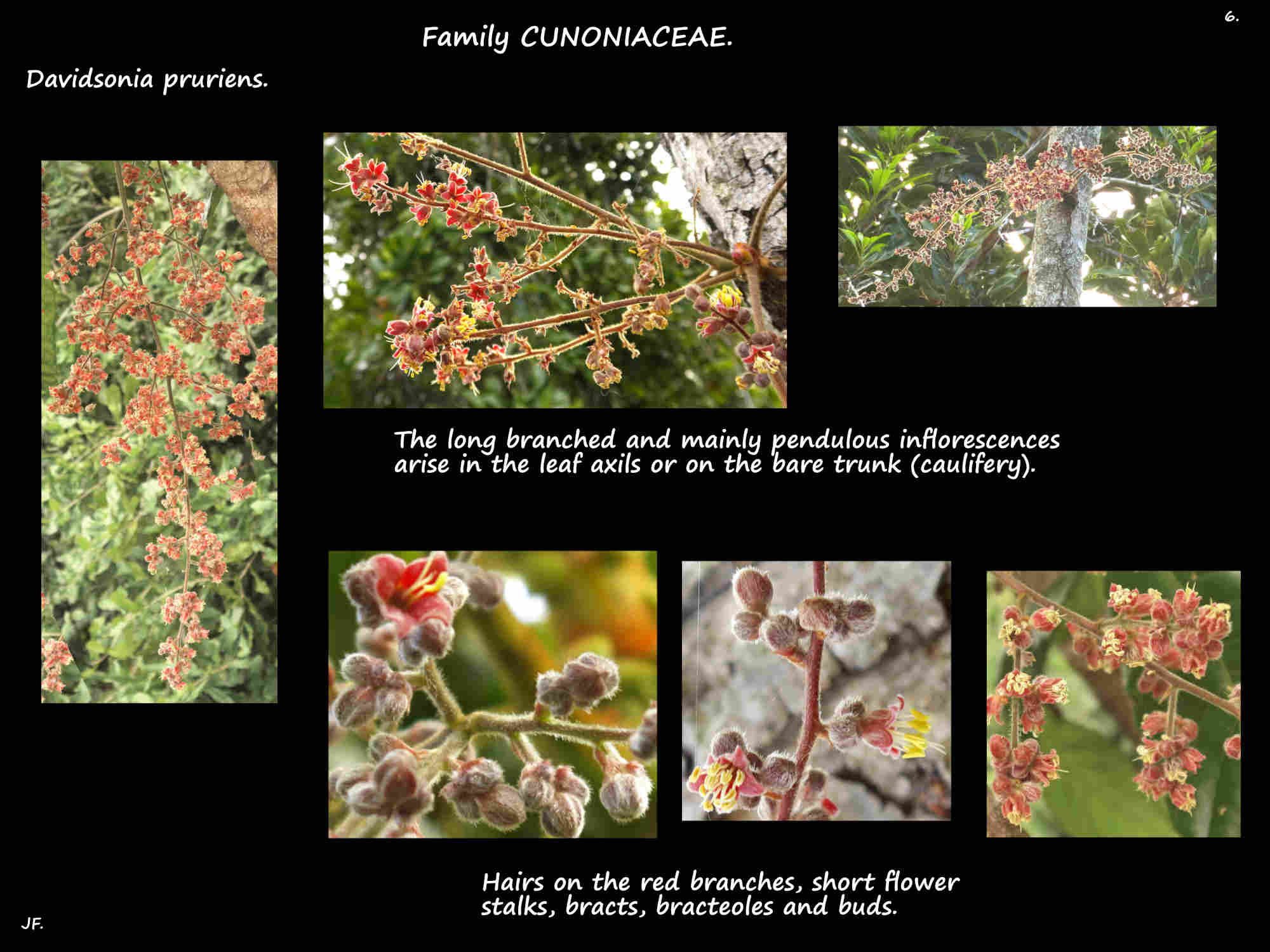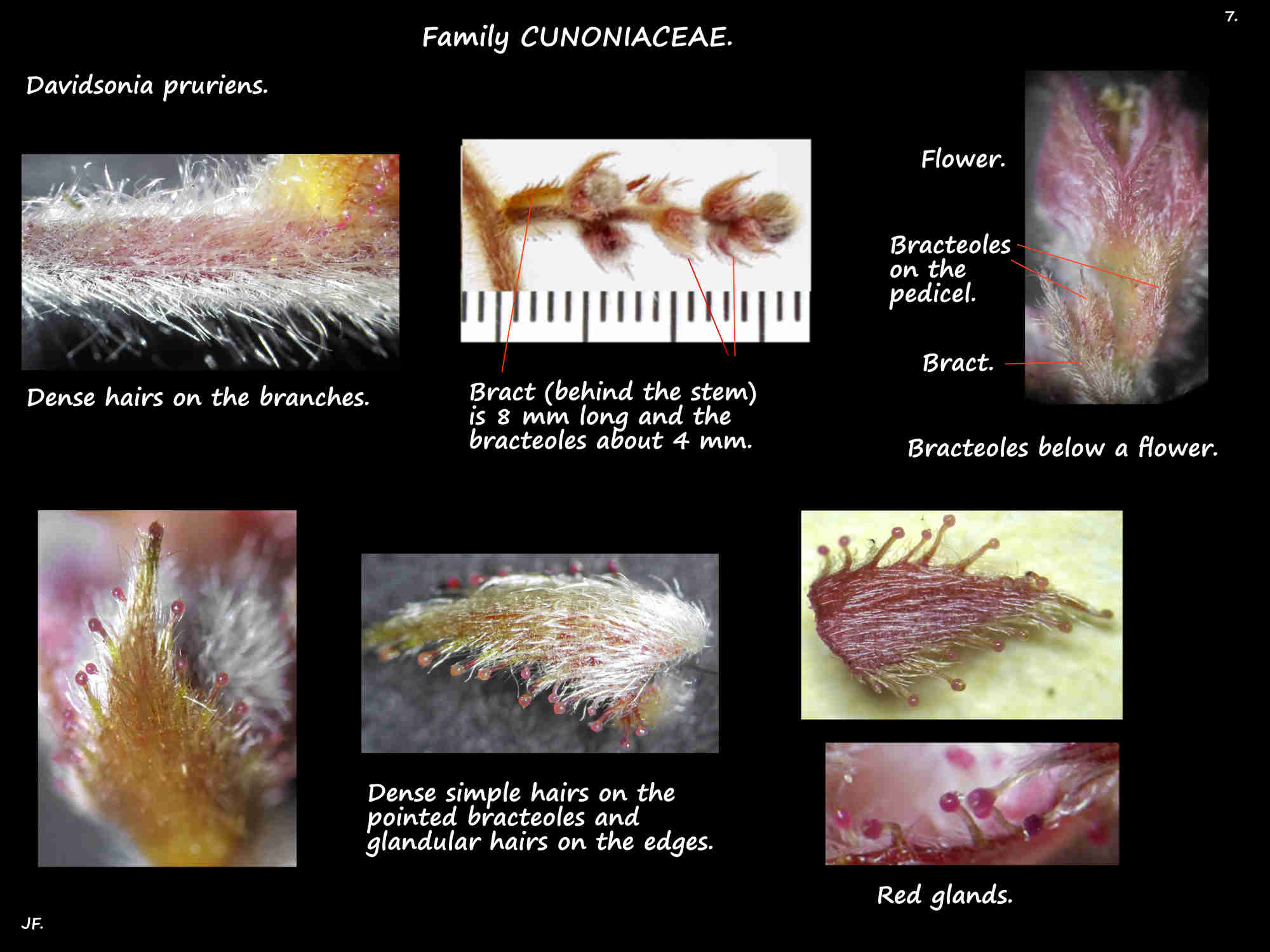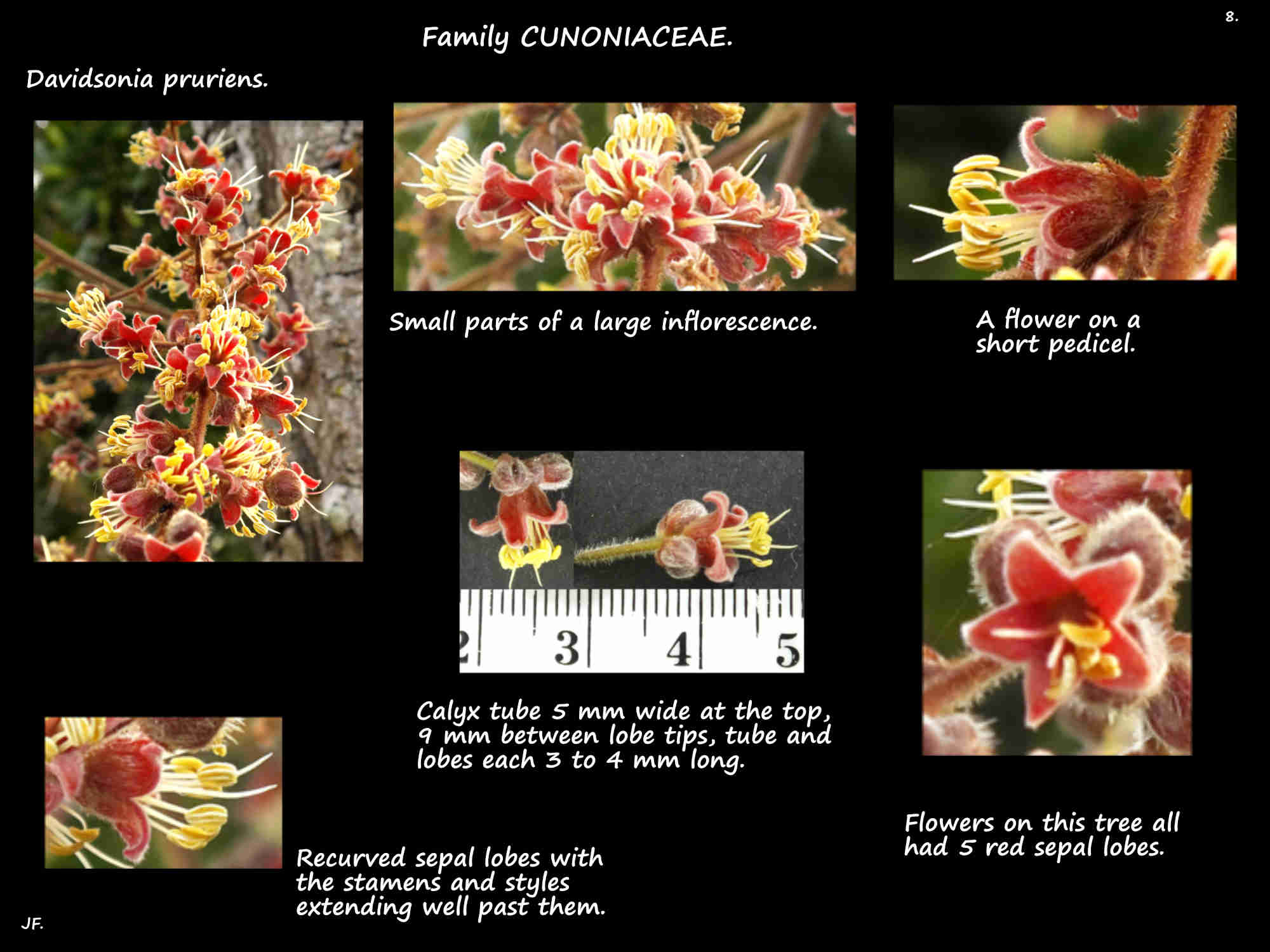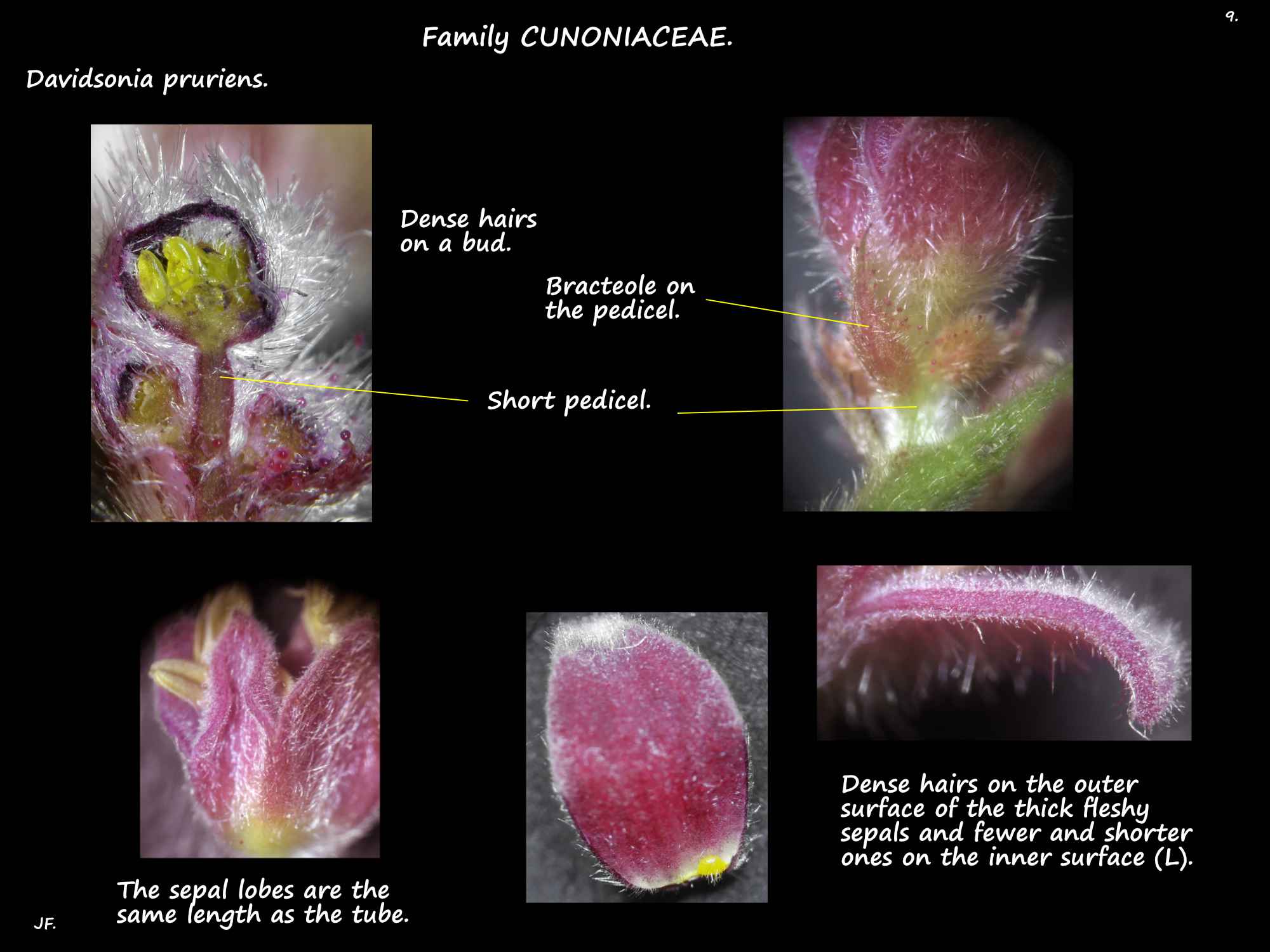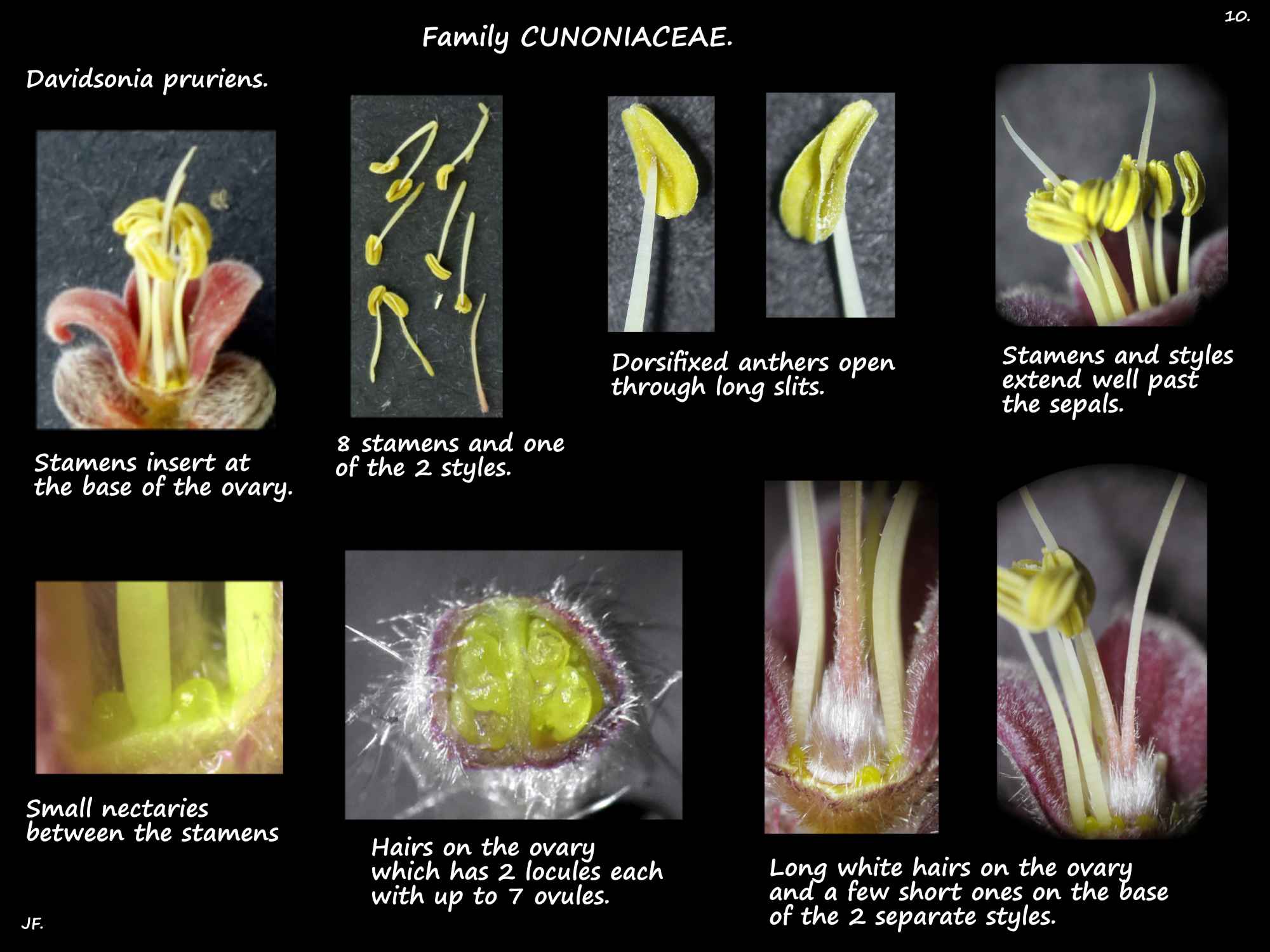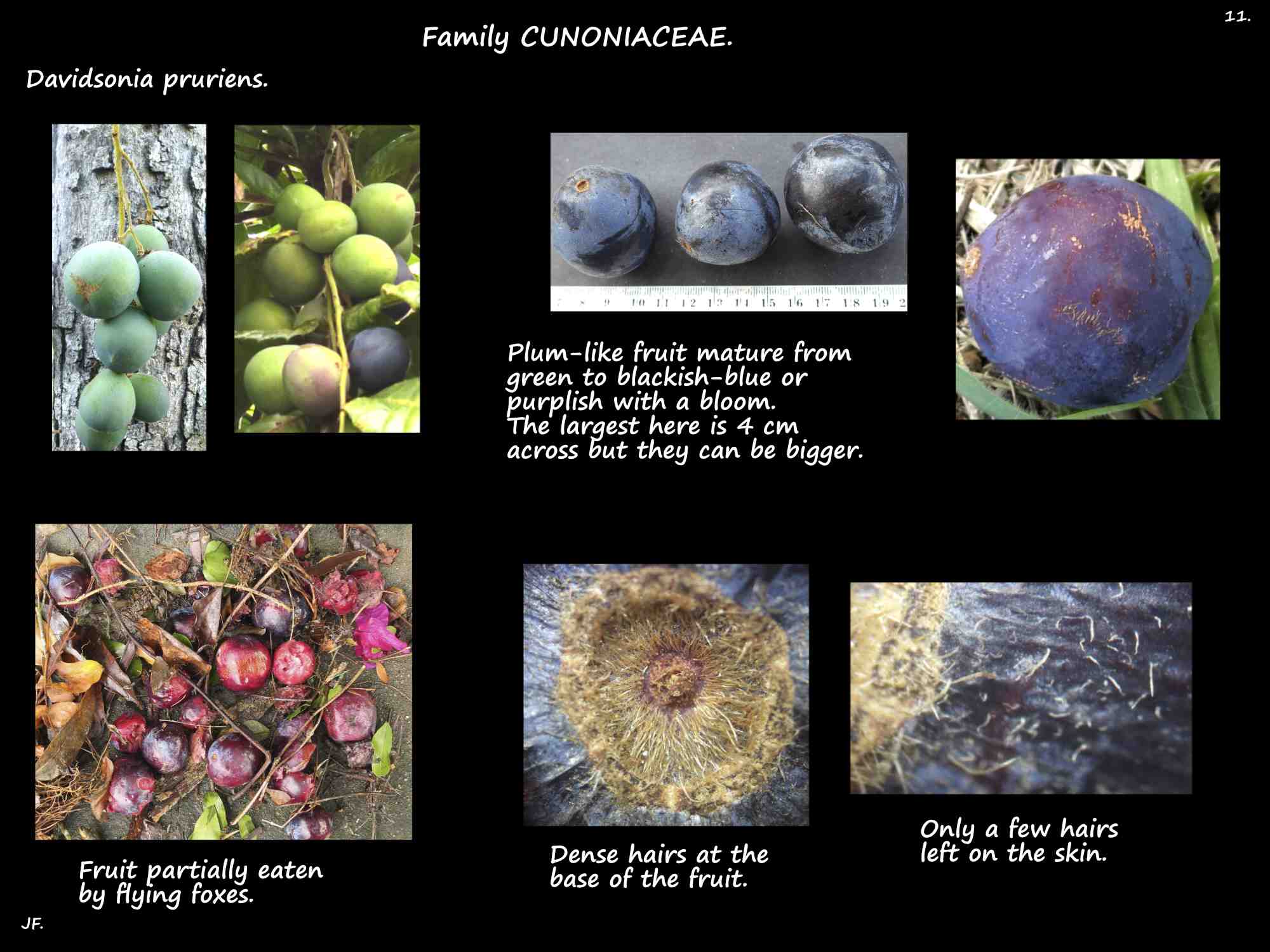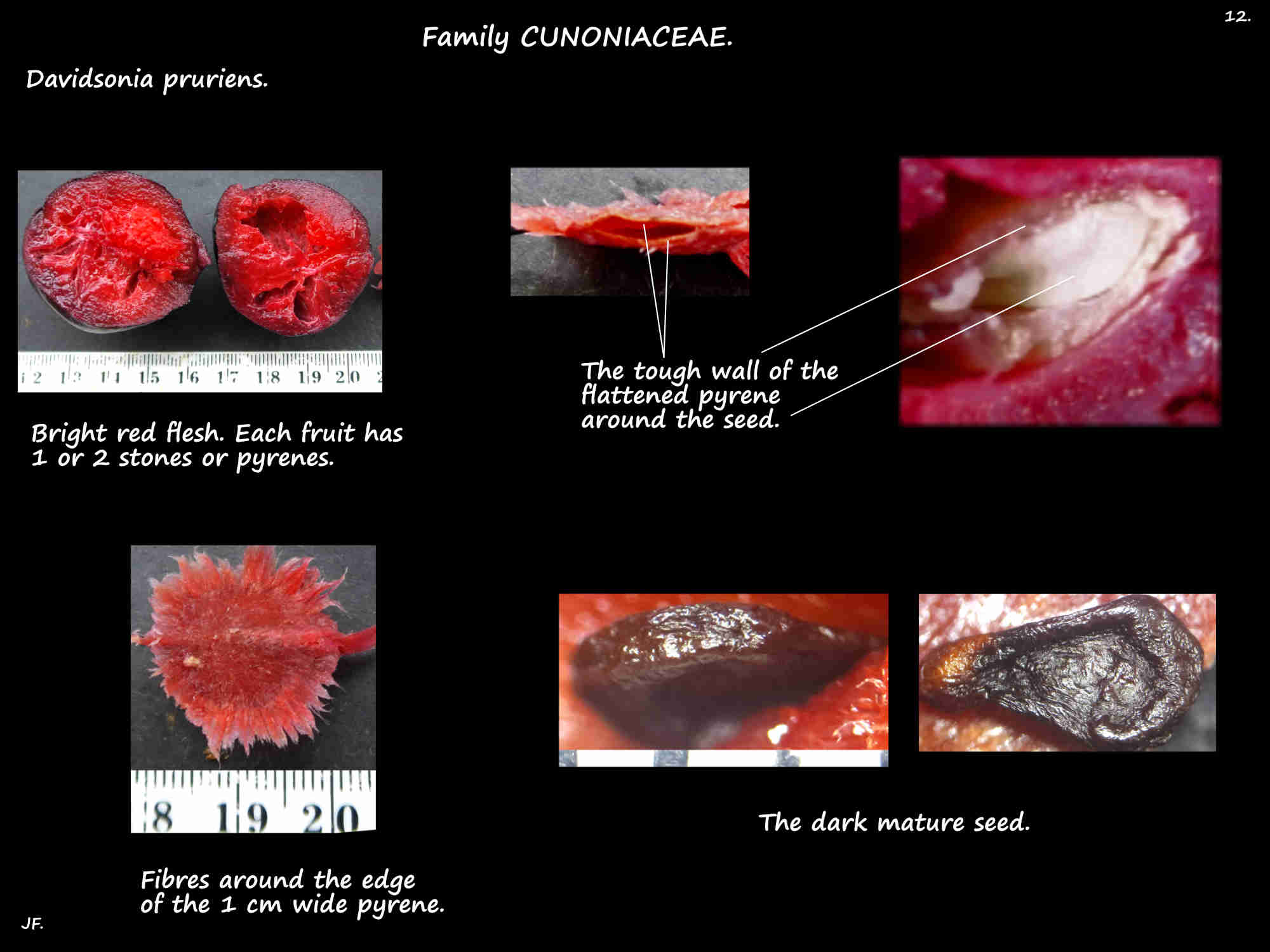Davidsonia pruriens.
The 3 species have many similar features as described in the Davidsonia file.
D. pruriens, the Queensland Davidson’s plum is native to northern Queensland.
These are the tallest trees up 12 to 15 m high with a thin brown trunk and dense crown.
New growth has dense long hairs.
Leaves can be over 1 m long with up to 17 leaflets up to 25 or 30 cm long.
Leaflets have pale soft non-irritant hairs on the lower surface.
Flowers have no petals but 4 or 5 reddish sepals with their bases fused.
There are 8 or 10 stamens in 2 whorls.
Those opposite the sepals have narrower filaments than those in between.
The filament bases are fused with the nectary disc which has small upward extensions between the filaments.
The ovary is around 25% inferior with the 2 carpels fused at the base but free at the top.
The 2 long thin styles each have a small capitate stigma.
The up to 8 ovules in each locule are in 2 rows.
The fruit are larger than those of the other species.
Two varieties are described.
Features are detailed in the illustrations below.
The other 2 species are:
Davidsonia johnsonii.
The Smooth Davidson’s plum, native to S.E. Queensland and northern N.S.W. is an endangered species.
Trees, with a spreading crown are up to 12 m high and they sucker from the roots forming clumps.
Young stems and leaves have soft hairs that do not irritate the skin.
The leaves are typically under 30 cm long with up to 9 leaflets 15 cm long.
Leaves and fruit typically have no hairs (leaves may have a few on the veins underneath).
Davidsonia jerseyana.
The New South Wales Davidson’s Plum is native to a few areas in northern N.S.W.
The trees, often around 5 m high have brown bark and new leaves are reddish.
Leaves, up to 60 or 80 cm long have up to 17 leaflets up to 30 cm long.
The lower surface of adult leaves has irritant brown hairs.
There may be a few soft hairs on the upper surface.
The fruit only have a few brownish hairs.
J.F.

